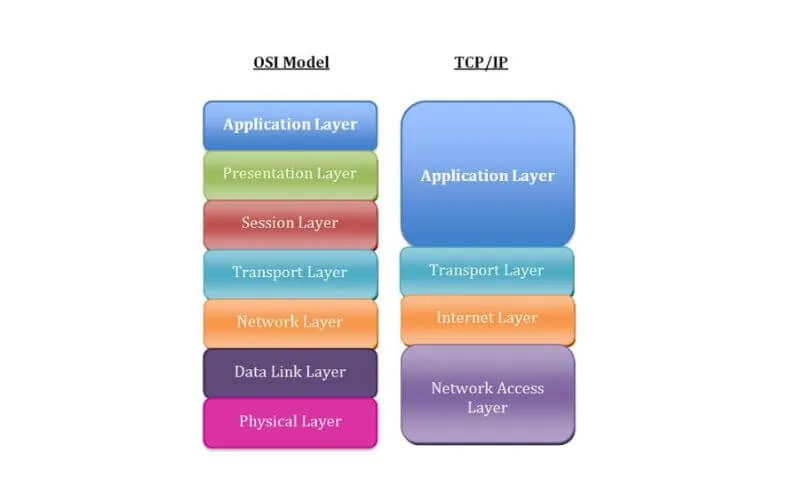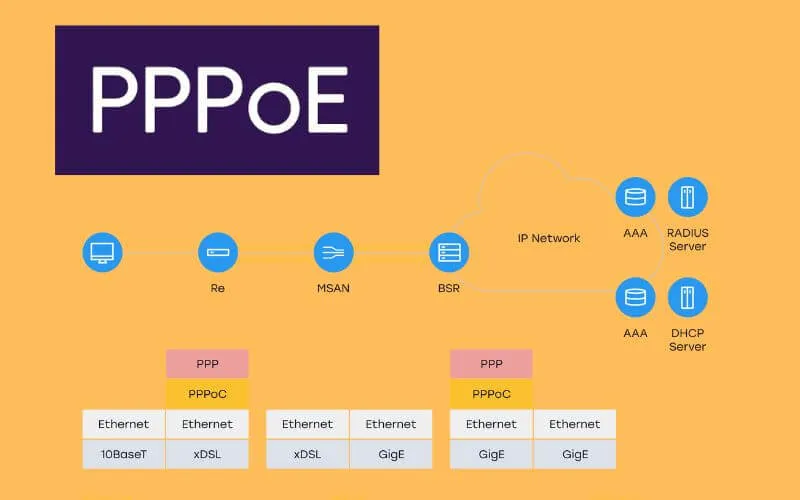What is PPPoE for and how to get multiple public IP addresses with a single Internet subscription?
The Point-to-Point Protocol over Ethernet(PPPoE) protocol is now used to establish a connection with the Internet network, or rather with the telecommunications operator’s equipment, for broadband or ultra-wideband connections .
The logical architecture of a telecommunications network and of any local network is described with theOSI model or ISO / OSI stack .
A series of layers “stacked” one on the other (there are 7 in total) describe the communication protocols that are used. The TCP / IP model, on which the logical functioning of the Internet is based, represents the de facto standard derived from the OSI model.

Source Wikipedia: The PPPoE protocol acts at the second level of the ISO / OSI stack (LinkorLink). Below is only the physical medium used for the transfer of the signal and the “bits” (see Binary code, bits and bytes: what you need to know ).
At the time of dial-up and ISDN connections, PPP (Point-to-Point Protocol) was used, a protocol that dealt with managing authentication, encryption and compression.
PPPoE inherits the same characteristics of PPP allowing to establish a connection between two Ethernet ports: that of the user’s modem router on one side and that of the network device used by the Internet access provider on the other.
As you can see most of the providers use the PPPoE protocol also for FTTC / FTTH fiber connections, not only for the old ADSL. With PPP it was possible to connect only one computer to the telecommunications operator’s server; with PPPoE, you can connect several different devices at the same time.
It is said that each PPPoE connection allows you to establish a “tunnel” to the node of the chosen Internet provider. Once the connection is established, the provider will automatically assign viaDHCPa public IP address (sometimes behind NAT; the same public IP is shared among many users) to the subscriber’s modem router or router.
How to establish multiple connections via PPPoE and get a different public IP address
By sharing the benefits of using the PPPoE protocol with subscribers, most Internet providers allow multiple connections to be established at the same time.
Assuming you have already established a PPPoE connection with the main modem router installed in your company, office or home, know that you cancreate additional tunnels from other routers (without modems) or from individual workstations or server systems.
Such devices will be able to obtain a public IP address but it will be attested directly to their network interface. The IP address received via DHCP from the provider will always be different from the one assigned to the main modem router.
However, it is not recommended to expose individual devices to the Internet by directly assigning them a public IP (unless the communication ports are adequately protected by a firewall).
If you want to use more public IP addresses, it is good to configure a second PPPoE connection on the routers that allow you to do so (the Mikrotiks, for example, allow it) or connect in cascade another router configuring it to establish a new PPPoE tunnel towards the node of the Internet provider. Using the NAT technique the devices connected downstream of the router will share the same public IP on the Internet.
Some telecommunications providers issue a maximum number of IPs for each subscription which cannot exceed 3, 4, 5 or 6.
Using multiple public IPs could be useful to separate networks, simulate configurations that involve the use of one or more server machines, perform various types of tests, or create a real “guest network” completely separate from the main network.


